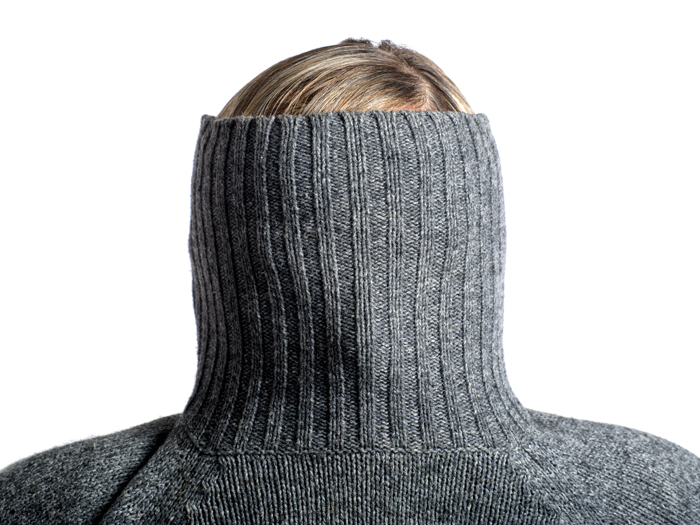10 Surprisingly Simple Ways to Avoid the Flu
Embrace these lesser-known but remarkably effective strategies to prevent flu (and cold) this season.

Nobody tries to get sick. And yet, about 10 percent of Americans get the flu—and the accompanying symptoms of cough, aches, and fatigue—each year, according to the Centers for Disease Control and Prevention (CDC).
As we age, we need to make more of an effort to stay well. “Adults 65 and older are more susceptible to the flu than younger folks,” says Joseph Ladapo, M.D., Ph.D., an internal medicine specialist at UCLA. “So taking precautions is important.”
This starts with two obvious but critical strategies to help prevent illness.
Get a flu shot. The flu vaccine can lower your risk of getting the flu. If you do get sick, it can reduce the severity of your symptoms and your chances of serious complications like pneumonia or hospitalization. This is especially important if you have a chronic condition like diabetes, heart disease, or lung disease.
It takes about two weeks for the vaccine to take effect, and the CDC recommends people get it by the end of October. But if you missed that window, you can still get it through January. Most health plans and Medicare cover an annual flu shot. If you don’t have health coverage, you can often find flu shots at your local pharmacy or community events.
Wash your hands. Do it often, and do it well. It’s one of the best ways to prevent illnesses that can be spread from person to person, such as the flu and colds.
All you need is clean water of any temperature and plain soap. Antibacterial soaps haven’t been found to be any better or safer than plain soap, and may expose you to unnecessary or harmful chemicals. Scrub your hands together—including the back of your hands, between your fingers, and under your nails—for at least 20 seconds. Be sure to finish by drying your hands.
With those bases covered, you’re off to a good start. But to maximize your chances of staying well all season, adapt these lesser-known but effective strategies to prevent flu and cold.
1. Use Separate Hand Towels
Cloth hand towels can accumulate germs within as little as three days, says Charles Gerba, Ph.D., a microbiologist at the University of Arizona and coauthor of The Germ Freak’s Guide to Outwitting Colds and Flu. If an infected person dries their hands with a towel, their flu germs could transfer to it and then to you, he says.
At minimum, everyone should use their own hand towels during cold and flu season. For extra protection, especially if someone in your household is sick, consider using paper towels in the bathroom and kitchen, Gerba says. Look for recycled or choose-your-size options to cut down on waste.
2. Serve Breakfast in Bed—the Guest Bed
Whenever Gerba’s wife is under the weather, he brings her meals in bed. Sweet, right? He has an ulterior motive: It keeps her from infecting the kitchen.
“Sick people can transfer a cold or flu virus to other household members within as little as four hours,” Gerba says.
What’s more, if a member of your household has the flu, your chances of getting sick can go up to 38 percent, according to a study in Trends in Microbiology. That’s because the virus can spread when you touch a surface a sick person has touched. It can also travel via flu droplets through the air—up to six feet.
Your move: Quarantine any sick members of your household, and try to keep your distance, especially if they’re coughing or sneezing.
3. Wipe Down the Remote
Sick people like to watch TV, but you rarely think to clean the remote, Gerba says. His research has identified the clicker as one of the germiest objects in the home.
When you touch hard surfaces like remotes, phones, or doorknobs, about half the germs can transfer to your hands, Gerba says. And viruses can survive on these surfaces for several days.
To reduce your risk of picking up a bug, sanitize hot spots with wipes that say “disinfecting” on the label, and be sure to follow the instructions for best results. Staying at a hotel? Put the remote in a plastic bag to provide a protective layer.
4. Place Hand Sanitizer Strategically
You may keep hand sanitizer in your purse or car, but it’s not just for on-the-go disinfecting.
In a 2014 study, researchers contaminated the hands of one adult in each of seven different households with a virus. They then placed an alcohol-based hand sanitizer around the house—kitchen, bathrooms, nurseries—and instructed family members to use it one to three times throughout the day.
After eight hours, using hand sanitizer resulted in 99 percent fewer viruses on their hands, compared with those who didn’t use hand sanitizer. There were also fewer viruses on counters, faucets, light switches, and other surfaces.
“It’s a great strategy,” Gerba says, “because a sick person may not want to get out of bed to wash their hands.” When you can, of course, washing your hands is still the best option.
Look for a hand sanitizer with at least 70 percent alcohol, like Purell Advanced Instant Hand Sanitizer. “The alcohol will dissolve influenza’s fatty outer layer,” Gerba says.
5. Take the Stairs
The most germ-infested elevator button: first floor, Gerba says. After all, it’s the one button that everyone must press.
If you can, take the stairs instead. Another option: Push the button with your knuckle, and then break out that hand sanitizer.
6. Trade Leather Gloves for Cotton or Wool
Many people think it’s safer to touch your face with a gloved hand than a bare one, but gloves can still pick up germs, Gerba says. Leather gloves may transfer germs even more easily than cotton or wool, he adds.
That’s because cotton and wool are more porous. If a virus burrows into the fibers, it won’t easily get out. Plus, those materials are easier to wash—which you should regularly do in hot water.
7. Get Some Fresh Air Every Day
Staying cooped up indoors increases your exposure to germs. Plus, getting outside helps boost physical activity and social interaction, which are both good for your immune system.
“Cold weather can be socially isolating for older adults,” says Navjot Jain, D.O, an internal medicine specialist in Camden, New Jersey. “And that can make them susceptible to depression, which suppresses the immune system.”
Subscribe to our newsletter
It's quick and easy. You could be one of the 13 million people who are eligible.
Already a member? Click to discover our 15,000+ participating locations.
Follow Us
Exercise, however, can reduce your risk of an upper respiratory infection. When researchers tracked 1,000 adults during the winter months, they found those who exercised at least five days per week were 43 percent less likely to get sick, compared with people who exercised one day or less.
You don’t have do an intense workout every day. If weather permits, aim to go for a brisk 20-minute walk five days a week. Remember to dress appropriately for cold weather, Dr. Jain cautions.
If outdoor activity isn’t safe or practical, head to your favorite SilverSneakers class, hop on the treadmill, or jump into an indoor pool. Or try this 10-minute, no-equipment beginner cardio routine.
8. Embrace the Fist Bump
About 30 percent of people with the common cold have the virus on their hands, and most likely on the fingertips, Gerba says.
Minimize your hand-to-hand contact by avoiding handshakes and making the fist bump your go-to greeting during cold and flu season.
In a situation where you absolutely have to shake hands? Take extra care not to touch your eyes, nose, or mouth, which is how cold viruses often enter the body.
9. Use a Humidifier
The flu virus likes dry environments, Gerba says. And cold air can be especially dry.
Higher humidity levels can reduce the spread of the flu virus, according to a study in PLOS One. When researchers released viral particles in a room at a relative humidity of 23 percent or less, up to 77 percent retained their infectious capacity. But when humidity was increased to 43 percent, only 14 percent were infectious.
Keep the humidity level between 40 and 45 percent. Higher than that doesn’t provide additional flu-fighting benefits but may increase the risk of mold. Plus, keep mold away by cleaning your humidifier with plain dish soap and hot water at least every third day.
10. Skip Your Weekly Card Game
The cold virus can be transmitted by playing cards with someone who’s sick. “The virus can get on the cards and be passed around, infecting other players,” Gerba says.
Don’t want to give up games all season? At least keep hand sanitizer on the table. Or maybe just play charades instead.
Check Your SilverSneakers Eligibility Instantly
SilverSneakers members can go to thousands of gyms and fitness locations across the nation, plus take exercise classes designed for seniors and led by supportive instructors. If you have a Medicare Plan, it may include SilverSneakers—at no additional cost. Check your eligibility instantly here.
Already a member? Get your SilverSneakers member ID and exclusive fitness content by logging in to or creating your online account here.





